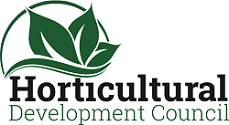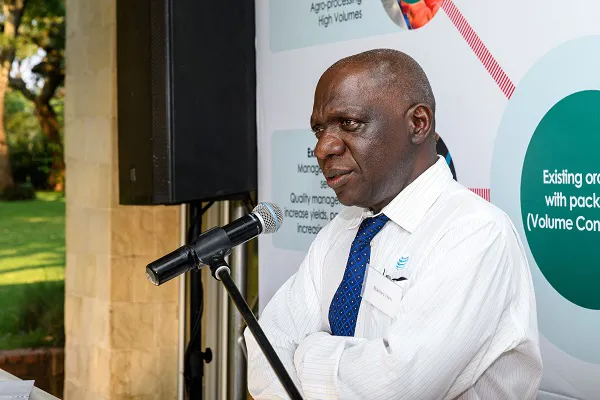 The Zimbabwean Horticultural Development Council (HDC) is today and tomorrow hosting an investment forum, the first of its kind, which they would like to establish as an annual event to track development trends and opportunities in Zimbabwe and to provide insights and analysis with the aim of attracting foreign direct investment into Zimbabwean horticulture.
The Zimbabwean Horticultural Development Council (HDC) is today and tomorrow hosting an investment forum, the first of its kind, which they would like to establish as an annual event to track development trends and opportunities in Zimbabwe and to provide insights and analysis with the aim of attracting foreign direct investment into Zimbabwean horticulture.
The Zimbabwean government aims to increase agriculture's contribution to US$8.2billion by 2025 to reverse the decline in food production, said Vangelis Haritatos, deputy minister of lands, agriculture, fisheries, water and rural resettlement (right), through a horticultural recovery and growth plan to revive the domestic and export horticultural sectors.
"The Horticultural Development Council plays a vital role in improving horticultural business efficiency and competitiveness in Zimbabwe. It represents 77% of current horticultural export turnover of Zimbabwe," he said. "Our country is on a path to win back its regional status of food security and surplus."
Deputy Minister Haritatos noted a successful past season during which the agricultural sector grew by 34% and the country is food secure.
Currently horticulture contributes 6.5% to total agricultural output and 0.7% of Zimbabwe's total gross domestic product; Zimbabwean agriculture earns US$77million in export revenues at the moment.
"At its peak the horticulture industry recorded exports above US$130 million. It fell to its lowest ebb in 2009 to around US$20 million," said the governor of the Reserve Bank of Zimbabwe, Dr John Mangudya.
Horticulture's contribution to Zimbabwe's export earnings (source: Reserve Bank of Zimbabwe; HDC investment forum)
Vision: 30% annual growth rate by 2030
Before the new dispensation in 2017, the horticultural growth rate had been negative since the turn of the millennium. President Mnangagwa pledged to resolve land tenure matters and place agriculture at the epicentre of Zimbabwe's economic policy, with a particular focus on exports, aided by the relaxation of exporting procedures.
The aim now is a 30% annual growth rate in the horticultural sector by 2030, a "bullish" outlook (it is currently 5%), noted Stanley Heri, HDC chairperson, but one which could bring in US$1 billion in export earnings to the economy.
The development of a unique competitive brand for Zimbabwean horticulture would be key to its achievement.
Annual horticultural earnings over the past decades showing a slow recovery (source: Reserve Bank of Zimbabwe; HDC investment forum)
"I'm convinced Zimbabwe's unique selling proposition to the international community is the production of quality product," he maintained.
"In my view, Zimbabwe is a sleeping giant, taking into account what's happening in Ethiopia and Kenya where 70% of fresh produce is produced by the small-scale sector through the hub-and-spokes model."
 Stanley Heri, chairperson of the Horticultural Development Council (photo: Mike Wall)
Stanley Heri, chairperson of the Horticultural Development Council (photo: Mike Wall)
Mr Heri, himself a product of the hub-and-spoke model, emphasised the need of the private sector to invest in medium to longterm projects.
Clemence Chiduwa, the deputy minister of finance and economic development, acknowledged that horticulture is key to the development of Zimbabwe's economy. With the aid of the International Monetary Fund, a Horticulture Revolving Fund of US$20 million has been announced to provide exporters with foreign currency requirements; the modalities are still to be decided by cabinet.
 For more information:
For more information:
Horticultural Development Council
Linda Nielsen, CEO
Tel: +263 771 722 637
Email: [email protected]
https://www.hdczim.com/
